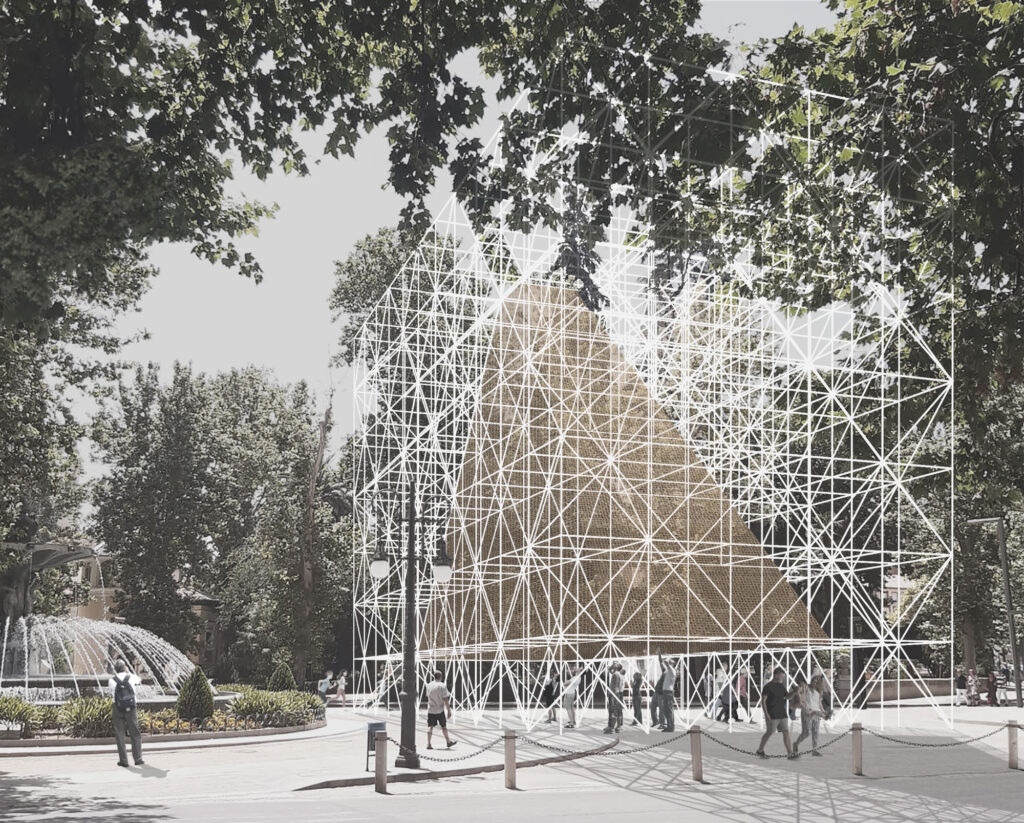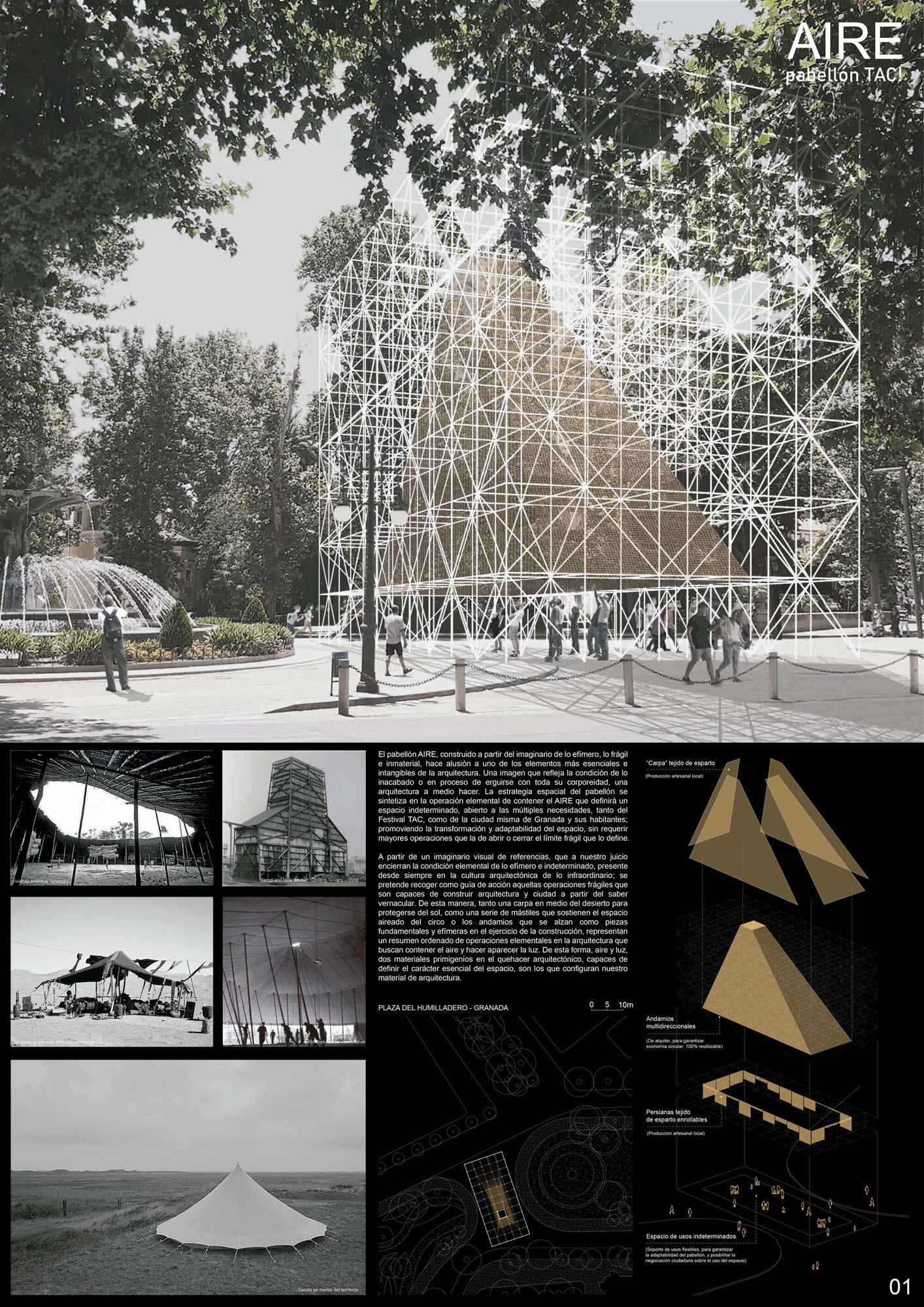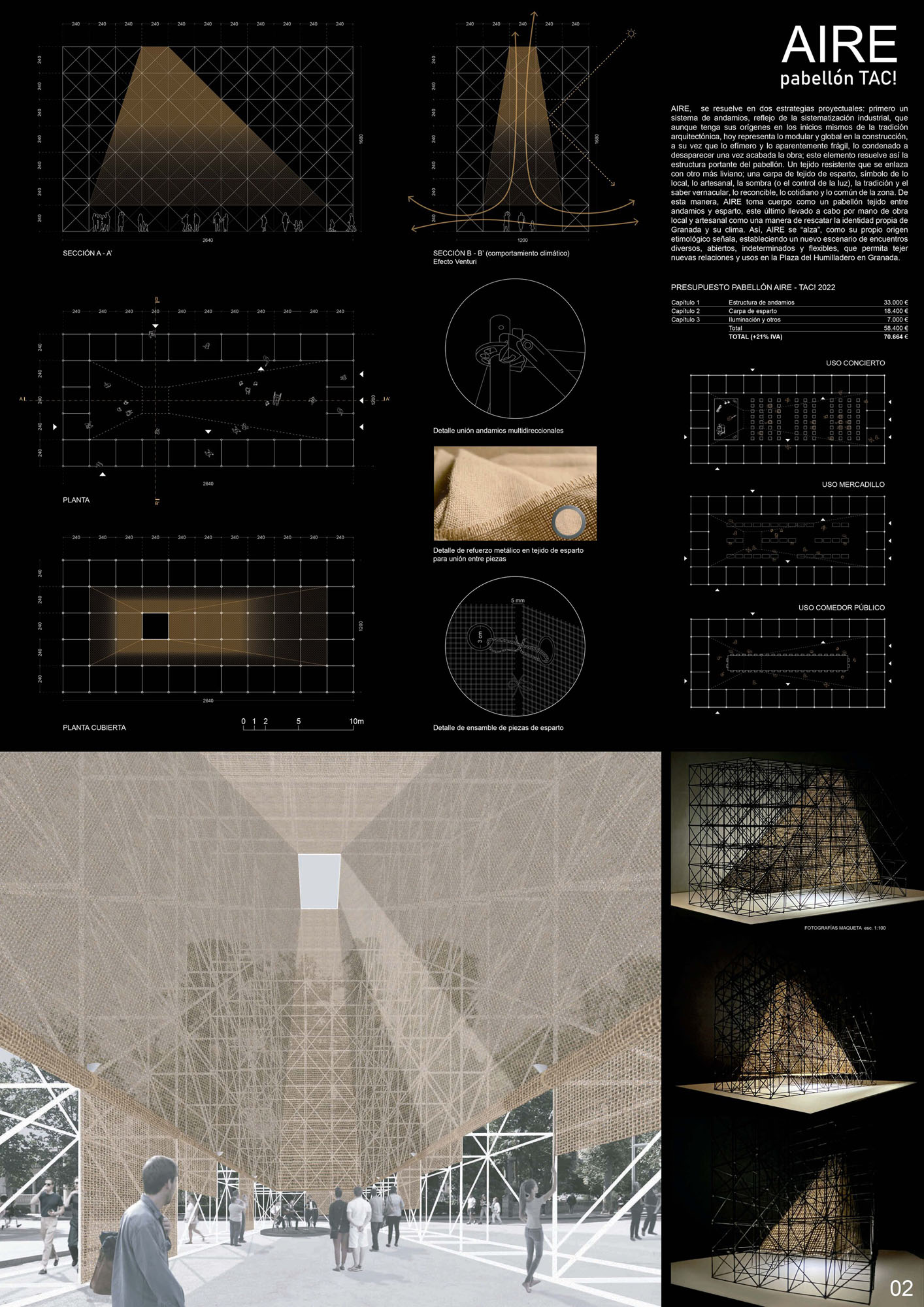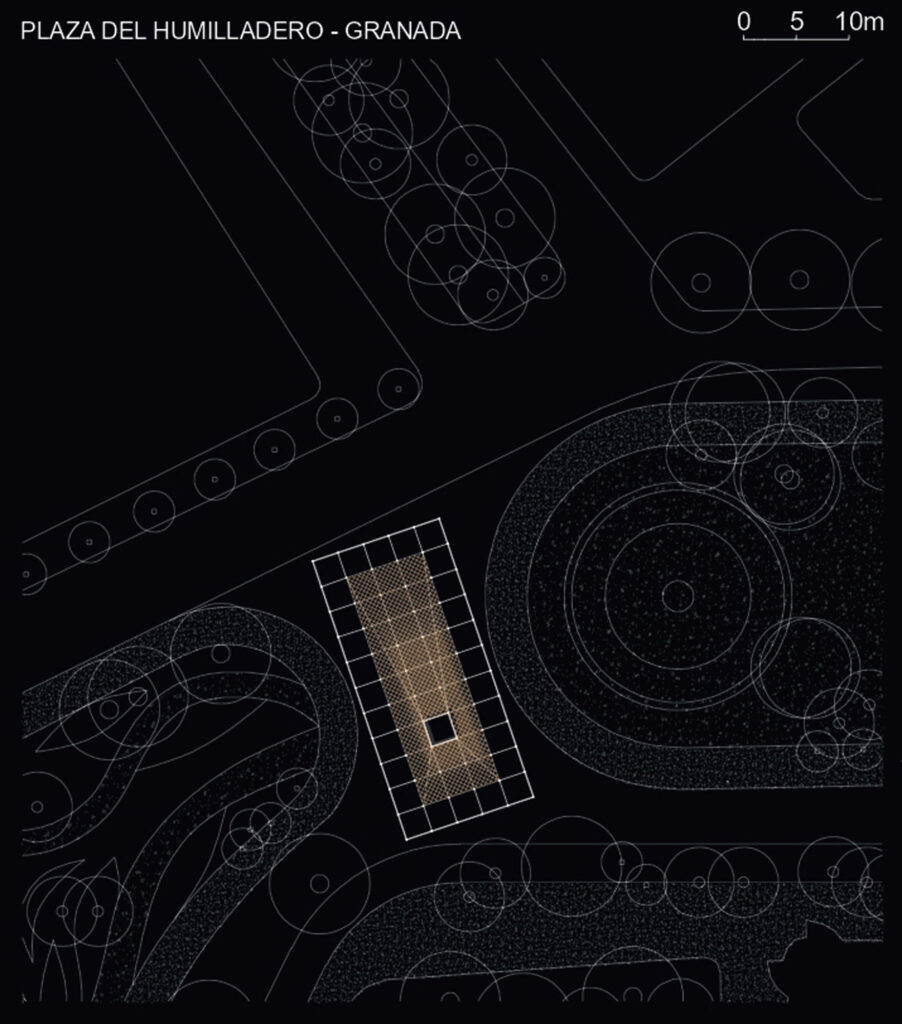The festival’s jury with the presence, among others, of Inês Lobo, Jury member of the BigMat ’21 International Architectural Award, selected the proposal “Aire” by P + S Estudio de Arquitectura for “its ability to offer a shelter space in dialogue with the large scale of the city, enabling multiple uses in relation to the environment.”

TAC!, Urban Architecture Festival, will each year turn a Spanish city into a space for innovation and experimentation. It will be carried out through the construction of a temporary pavilion chosen through an open call for proposals.
The festival’s jury, made up of experts Iñaqui Carnicero, general director of Urban Agenda and Architecture and its president, Lesley Lokko, Sol Candela Alcover, Carmen Moreno, Inês Lobo, José Vallejo and Javier Peña Ibáñez, who met in the city hybrid Nasrid (face-to-face and videoconference), has highlighted this project out of a total of 95 proposals from young architects for “its ability to offer a shelter space in dialogue with the large scale of the city, enabling multiple uses in relation to the environment.”

As winners of the call, P + S Estudio de Arquitectura will receive a prize of €10,000 and will carry out the project in Granada with an estimated base budget of €90,000 for the execution of the pavilion, which can be increased with contributions from sponsorships.
TAC! will unite contemporary architecture, young creative practices, urban and social reflection through meetings and activities around the pavilion that will establish a dialogue with the public.
Granada is the city that will host the first edition of TAC! The Plaza del Humilladero will be the site of the pavilion, which will be open to visitors from 14 October to 14 November 2022.

The Directorate General of Urban Agenda and Architecture of the Ministry of Transport, Mobility and Urban Agenda (MITMA), in collaboration with the Arquia Foundation, is organising this call for ideas aimed at young architects up to the age of (define age). It purpose is to create a temporary pavilion that will make the Plaza del Humilladero (Granada) stand out and that will also provide a space for cultural and leisure activities in the city. Following the jury’s decision, the creators of the winning proposal will receive a prize of €10,000 and will be able to carry out the project with an estimated base budget of €90,000 for the construction of the pavilion, which may be increased with sponsorship contributions. The competition involves the design of the pavilion. The TAC! festival will be responsible for the production and construction of the winning proposal in coordination with the selected team.
THE SITE
The Plaza del Humilladero is a wide triangle that serves as an off-centre junction between the boulevard of the Paseo del Salón and the Carrera del Genil or Carrera de la Virgen. But, above all, it is the space where visitors used to enter the city after crossing the Zirí bridge over the Genil river.


At this first meeting point between the fertile plain and the city, in the 17th century, a small chapel dedicated to Saint Sebastian was located, before which it was customary to have animals kneel
as a sign of respect. This gave rise to the name “humilladero”, or shrine, from the forced kneeling of the animals before the religious building.

With the passing of time, urban planning became more complicated and the square was surrounded by buildings and gardens that made direct access from the bridge difficult. However, this space became a place for festivities on special occasions: flower and fruit stalls, stage sets, and even the first travelling cinemas that visited the city at the end of the 19th century. Since then, despite continuous renovations, this space has been a meeting place and an obligatory stop for those coming from or going to the south of the city. It continues to be a place where many activities take place and a space enjoyed by pedestrians, forming part of the length of the Paseo del Salón.

